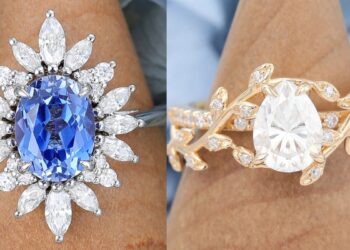The meaning of the word luxury (from the latin luxus) roughly translates to “extravagance”; in other words, items that are considered a little more special than everyday basic essentials. In fashion, luxury pieces were status symbols that were traditionally reserved for the wealthy; a practice which dates back as far as Ancient Egypt, Rome, and Greece.
By the 20th century, all this was set to change. As society became more democratic, luxury goods became more readily available to emerging classes. The opening of the first designer outlets during the 1930s gave consumers a go to store for branded clothing at discounted prices, giving consumers access to items they previously might not have been able to afford.
The Looks of Luxe
Over time, the meaning of luxury has come to mean many things. In addition to the original definition of luxury, which was related to excess and exclusivity, it has also come to be used in reference to more accessible objects and experiences; “little luxuries”, such as a bottle of perfume or a box of chocolates.
In a similar sense, the aesthetics of luxury fashion have also shifted: luxury during the excessive 80s was all about status. Throughout the economic boom of the 90s, this appeared in the form of “logomania”, where clothing was emblazoned with the names of designer brands.
Wealth Whispers
The recent quiet luxury trend centers on understated, simple-yet-sumptuous pieces in muted colors. Also referred to as “stealth wealth”, the trend has shifted the definition of luxury towards a subtler aesthetic built around quality items that are designed to last.
The popularity of quiet luxury has been linked to TV shows like Succession, which features super-wealthy characters dressed in expensive, yet subtle attire. It also points to a shift in consumer priorities towards creating a more intentional and sustainable lifestyle, demanding more accountability and transparency from brands.
Changing Tastes
Sustainability and luxury haven’t always gone hand-in-hand: the use of animal fur (once considered the height of luxury) fell out of favor during the 1980s and 1990s amid growing awareness of animal rights issues, while wealth disparity between CEOs and garment workers is still a controversial topic.
In recent years, a push for sustainability has impacted the clothing industry at every level, from high street stores to high-end boutiques. As consumers become more aware of deceptive marketing techniques such as greenwashing, the pressure is on for brands to demonstrate sustainability with actions, not words.
Does High End Mean High Quality?
Items constructed from premium-quality fabrics tend to cost more than clothes made using synthetic materials (though not in terms of cost-per-wear). It is possible to find luxe items at a lower price point, if you know where to look. In addition to buying from designer outlets or independent designers, luxury items can also be thrifted or found in vintage boutiques.
While fashions come and go at lightning speed, quiet luxury may prove itself to be more than a passing trend. Featuring timeless silhouettes and high quality fabrics, this slower, more considered approach to style is as much about heritage and “legacy pieces” as it is about looking forward to a more sustainable future.




